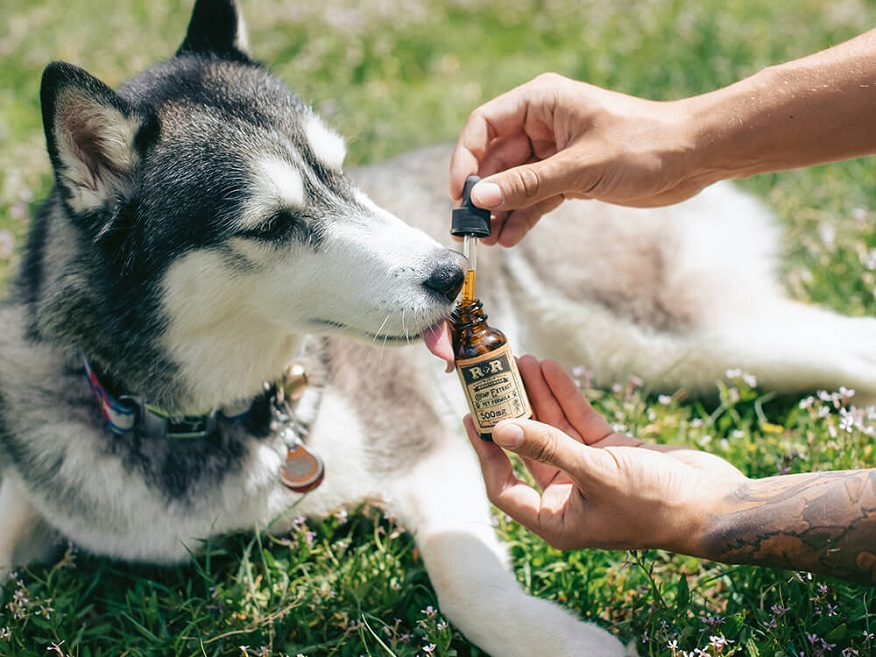Does Aromatherapy Really Calm Dogs?

If your dog is anxious, it’s normal for owners to do everything they can to keep them calm. After all, we love them to our hearts, right? Amongst other effective methods, aromatherapy is one method for relieving dog anxiety. You might wonder about aromatherapy for dogs well, dogs are particularly susceptible to aromatherapy since they have around 40 times more scent receptors than humans. This enables them to detect odours 100,000 times better than we do. Due to this, CBD oil for pets aromatherapy is appropriate for use with dogs because of their exceptional sensory memory.
It is not just today, aromatherapy has long been used with dogs. By the mid-1800s, scientific research on the medical effects of essential oils on animals and humans had advanced significantly in Germany and France. By the mid-1900s, veterinary aromatherapy was widely used in these nations due to favourable clinical effects. In this blog, we will try to understand whether aromatherapy works for dogs or if it works, then how it works to keep your four-legged pet relaxed.
What exactly is aromatherapy?
Aromatherapy, as the name implies, is a type of therapy that involves the use of smells for therapeutic purposes. Aromatherapy is a holistic treatment that addresses the entire body rather than just one symptom. If the body is out of balance, it can cause imbalances in the physical, mental, emotional, and energetic levels. Aromatherapy uses essential oils to help restore equilibrium by interacting with a being’s sense of smell and nervous system.
How Aromatherapy can help my dog?
CBD oil for pets Aromatherapy can help with a variety of health issues in dogs, including separation anxiety, fear, sleeplessness, hyperactivity, digestive disorders, itchy skin, reproductive issues, and aging issues. It is a gentle, drug-free technique that can help your dog’s health and well-being by relieving stress, anxiety, discomfort, and other difficulties.
What Exactly Are Essential Oils?
Essential oils are volatile, aromatic liquids obtained from plants’ leaves, stems, blossoms, bark, or roots. Distillation, expression, and CO2 or solvent extraction are used to get these oils. These beneficial compounds interact with olfactory senses and physiological systems to have favourable effects when diffused into the air or applied to the skin in a massage blend.
What is the mechanism of Aromatherapy?
Aromatherapy uses essential oils to promote a sense of well-being. In the case of dog anxiety, essential oils derived from natural sources such as rind, flowers and leaves, roots, and resins helps to improve mood and include a sense of serenity.
Scent has been dubbed “memoiristic” because of the olfactory bulb’s connection to the limbic system. For those who don’t know, this is the system that is in charge of memory and emotion, among other things. Scent molecules reach the bloodstream by inhalation or topical application of the skin. When fragrance molecules enter the lungs, they go into circulation and cause a variety of responses. Certain physiological responses have the potential to be relaxing. Hence, aromatherapy scents can influence mood.
Essential oils can be inhaled or applied topically to the skin to reach the bloodstream. While you may be concerned about the safety of essential oils to be used on your pet but when used correctly, they can provide a calming solution for your pet. Using a blend of essential oil that has been properly diluted guarantees that applying it to your dog’s skin and fur is both safe and effective. Diluted essential oils help to avoid skin irritation or mucous membrane discomfort. Proper use can assist support your dog’s health and minimize anxious habits.
Just make sure you don’t increase the number of essential oils or else you will be overwhelming your pet with fragrances. It is advised not to use synthetically generated fragrances as they lack therapeutic characteristics, essential oils are essential for successful aromatherapy.
How should I use Essential Oils on my dog’s skin?
Massage essential oils into your dog’s fur are the best way to use them. Targets less furry places like their belly, inner thighs, and legs, or beneath the neck, where it will come into contact with their skin. This allows them to benefit from the essential oils’ relaxing properties. You can also apply the oil and then work the essential oils into their fur with a fine brush. To be safe, take the following precautions while using essential oils for the first time:
- Make sure that the essential oils you use are 100% pure, preferably a dog-safe product. You can best cbd dog oils India from the Hempstrol official website after taking the consultation.
- To begin, start with a low dosage and monitor for any negative effects.
- Apply the oil in proportion to the size of your dog, using less for small dogs and more for larger dogs.
- Consult your veterinarian to ensure that the product you select is safe. Essential oils such as rosemary, tea tree, and peppermint should never be given to dogs.
- Essential oils should not be used on dogs who are prone to seizures.
- Avoid getting essential oils in your dog’s eyes, nose, ears, or genitals.
- To avoid your dog becoming desensitized to the aroma, use the essential oils at the proper times.
Aromatherapy can help your dog live a calmer, happier life. However, you should always consult with your veterinarian to examine your pet’s behaviour and rule out any medical conditions that may be causing them fear.
Is aromatherapy appropriate for dogs?
Diluting is the first step toward safety. Pure essential oils are extremely concentrated. It is best to dilute essential oil solutions to avoid overwhelming your dog’s sense of smell, hurting their skin or mucous membranes, or inducing hypersensitivity. When used appropriately, aromatherapy can help your dog to relieve stress, soothe itchy or irritated skin, calm digestive problems, repel insects, and treat infections.
While these items are not designed to diagnose, treat, cure, or prevent any disease, they can help with a variety of symptoms, strengthen the human-animal link, aid behaviour adjustment, and improve overall health.




